In Memorium: Francis Allegra (1957-2015)
We are proud to offer on behalf of the family estate, the full and intact collection of the late Judge Francis Allegra, noted collector and MR legal columnist, coming up for auction on MineralAuctions.com.
Auction Open: April 15, 2021 at 6:00PM CT through May 1, 2021 at 6:00PM CT!
Click here to bid on the Francis Allegra Collection
In light of the upcoming auction, we’d like to revisit some memories of Fran, originally published in 2017 as a booklet distributed at our Dallas Symposium.
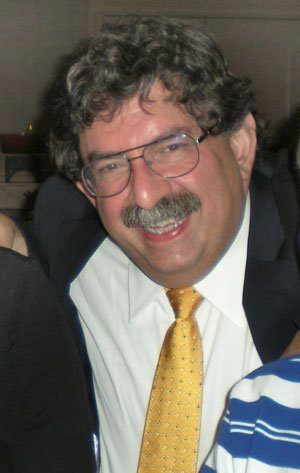
Many people here will remember Fran Allegra from the Tucson shows, and from his (free) legal advice to many of us over the years. I wanted to share a few personal memories about Fran: his role in this event; his collecting; and a few stories as we remember him as a fantastic speaker at the first inaugural year of this Symposium in 2011.
Fran was instrumental in creating what is now the DMCS, from the beginning. Gene Meieran pushed me to grow this event from the two evening talks we had at our gallery grand opening party in 2010 (at which he was the very first volunteer speaker, along with Astronaut and Senator Harrison Schmitt), into a formal Symposium. Gene met Fran through me shortly beforehand and they became fast friends, especially with all of Gene’s travel to DC. As I recall, a coincidental lunch or dinner with Gene and Fran in DC or Dallas was the next discussion of that idea, and then Fran actively helped us work on the format and the planning so that the first year revolved around “Museums and Philanthropy,” as a common theme of the event. Never having hosted a Symposium, I admit now that we winged it for the first few years, based on advice from such friends.
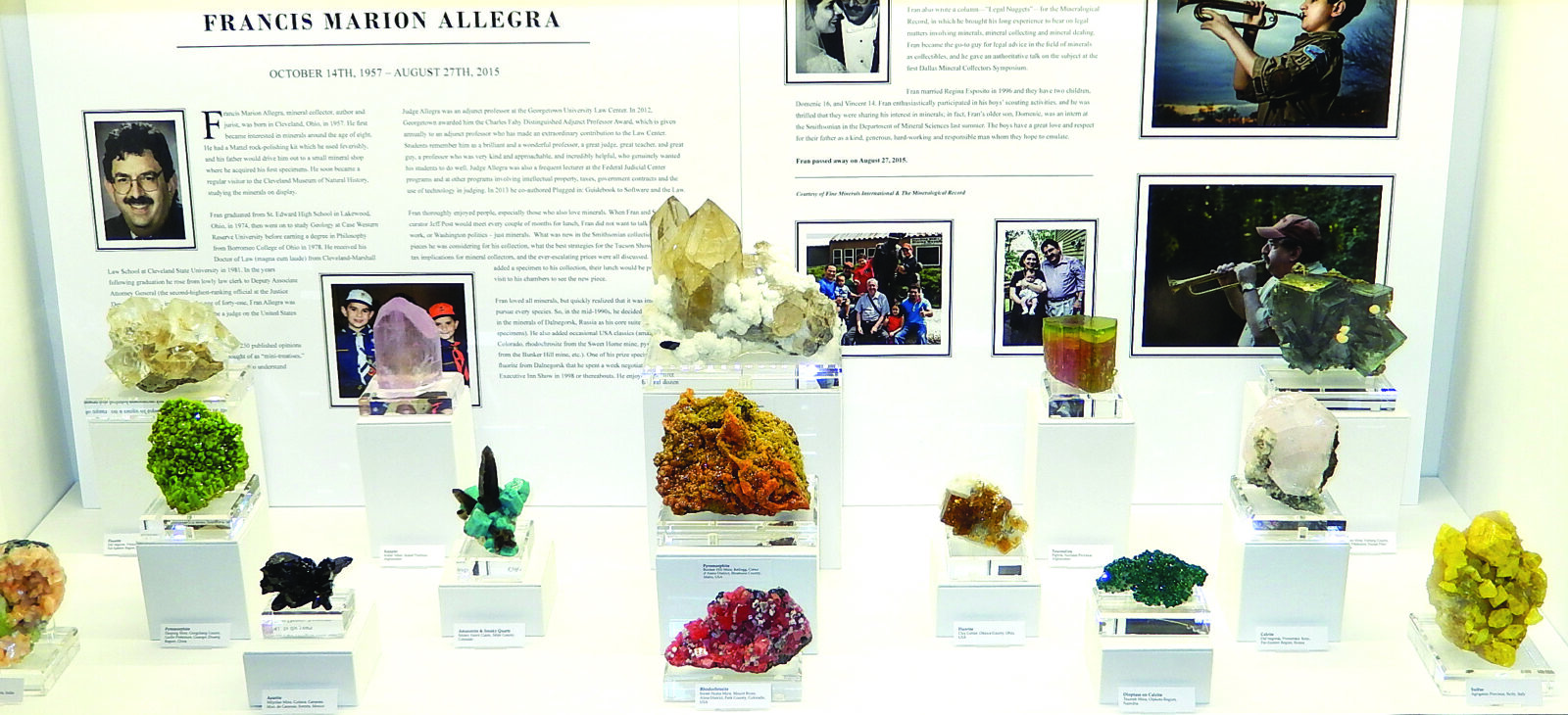
Despite his busy schedule (at the time he was overseeing a famous legal battle between the government and an undercover FBI officer who wrote a tell-too-much book about his experiences inside the Hell’s Angels biker gang), he volunteered to support us and be a speaker. His idea was to tie in minerals and museums, with the law: how does tax law work in the interplay of donations and philanthropy, for those of us who might donate items to museums? I was dubious. His sense of humor can be rather dry, and it was about law and lawyers… but he said to trust him. As a speaker in the first year, he surprised many who did not know him well. Who knew a lawyer could be so funny? I heard many people echo my thoughts in that first year, that his talk on Tax Law was the surprise comedy break we needed in a long day of testing this format, even amid other enjoyable talks. (For those who have not seen this talk, it is on Symposium DVD #1, from the Min Record in January 2011, and we have extra copies as well). His advice, and his ideas, are still completely relevant today and we encourage anybody interested to watch that talk.
At lunch after his talk in 2011, people kept coming up to him and saying things like “I didn’t know judges had a sense of humor,” to which he replied to the effect of “I’m not so easy on the bench as I am with mineral people.” He used a specific piece from his own collection to illustrate in his talk what makes a good specimen (as opposed to a bad choice which invites trouble later) for high-multiple return on a tax donation, that could stand up to a later audit and inspection. The piece he used was a spectacular deep blue hemimorphite from Mexico, a superb piece that he had purchased at Tucson from a European dealer as a Smithsonite from the Kelly Mine (for a fair price, even as a smithsonite!). His point was that an argument could be made for a high-multiple valuation of such a piece for donation, based on him finding a “sleeper” and adding information and provenance that was unknown and which increased the importance of the specimen for some museum collections. In his talk, he suggested a conservative appraisal of this piece for donation value might legitimately be 3.5X to 5X on what he paid for it, based on documenting comparables and the difference between a mediocre USA smithsonite and a top-level Mexican hemimorphite. By the end of lunch, he had an offer of 6X from Sandor Fuss, who bought the piece for Bruce Oreck’s collection of Mexico minerals. It sold as the dessert was served. Fran, who intended only to make an academic point by using a nice example of something tangential to his own collection, converted that investment into a significant Colorado Smoky Quartz and Amazonite specimen (shown on the last page of this booklet).
As a friend, Fran was there for any of us with legal issues and questions about philanthropy, what could and could not be posted on the internet, and general advice for those of us dealing with international travel and customs issues. I should probably mention at this point that he advised me when I got arrested by Interpol too, but that is another story for another time and place.
Dealers knew Fran as one of the luckiest collectors out there, from his emergence on the scene in Tucson in the late 1990s. With a family and a rising busy career as a young attorney working for the government, his mineral budget had to be refined to where he would discipline himself and purchase only 1-2 pieces at each show. He was so busy, that he would only be able to attend the Tucson show each year (most years). The lucky/funny thing was, that his mother-in-law met him there and participated in the decision process, and then supported him with a budget to encourage his hobby and enjoyment of the break from his job and stresses. The first time they sat me down and explained to me this situation, I can say I was very impressed with her – I have never heard of another collector with such a supportive in-law! It was something fun that they shared together, and then he would go home and share with his wife and later his kids. At home, 1999, Fran kept his minerals in his office (Federal Appellate Court) at the Old Red Brick Courthouse across from the White House in DC. We used to joke that it was the most secure mineral collection in the country. I had many parcels stopped by security, at their scanner, and eventually, the security people came to realize that Fran would just be the difficult one in the building. He had lovely wooden custom showcases with glass doors made as built-ins to his office (courtesy of us, the US taxpayers), and always worked from his desk facing the mineral collection, saying that it brought him calm and tranquility. (Looking to the right, one could gaze out the windows at the front door of the White House – a distraction, indeed!). Fran showed his collection to many people, including several Congressmen who collect, and he became close friends with Jeff Post at the Smithsonian and others involved in the mineral world in DC. Anybody passing through would make a pilgrimage to his office for lunch with a view (superb cafeteria food, or Thai takeout, his favorite). As you will read below, Fran drifted to focus on Russian minerals and the USA classics when he could afford them, wheeling and dealing his old pieces to work up, in the end doing business almost exclusively with Wayne Thompson and another two “young punk” dealers who were flexible in trading and helping a growing collector on a budget, as we all grew together from relatively unimportant obscurity in the hobby during the early 1990s: Daniel Trinchillo and myself. In fact, Daniel gave him such a good deal on a Chinese specimen I wanted but could not afford in the 1990s, that I later had to 8X the price, to trade it out of Fran to add it to my own China collection (an Azurite from Anhui I still own today!) Today, Fran’s core collection of USA and Russian classics remains with his family.
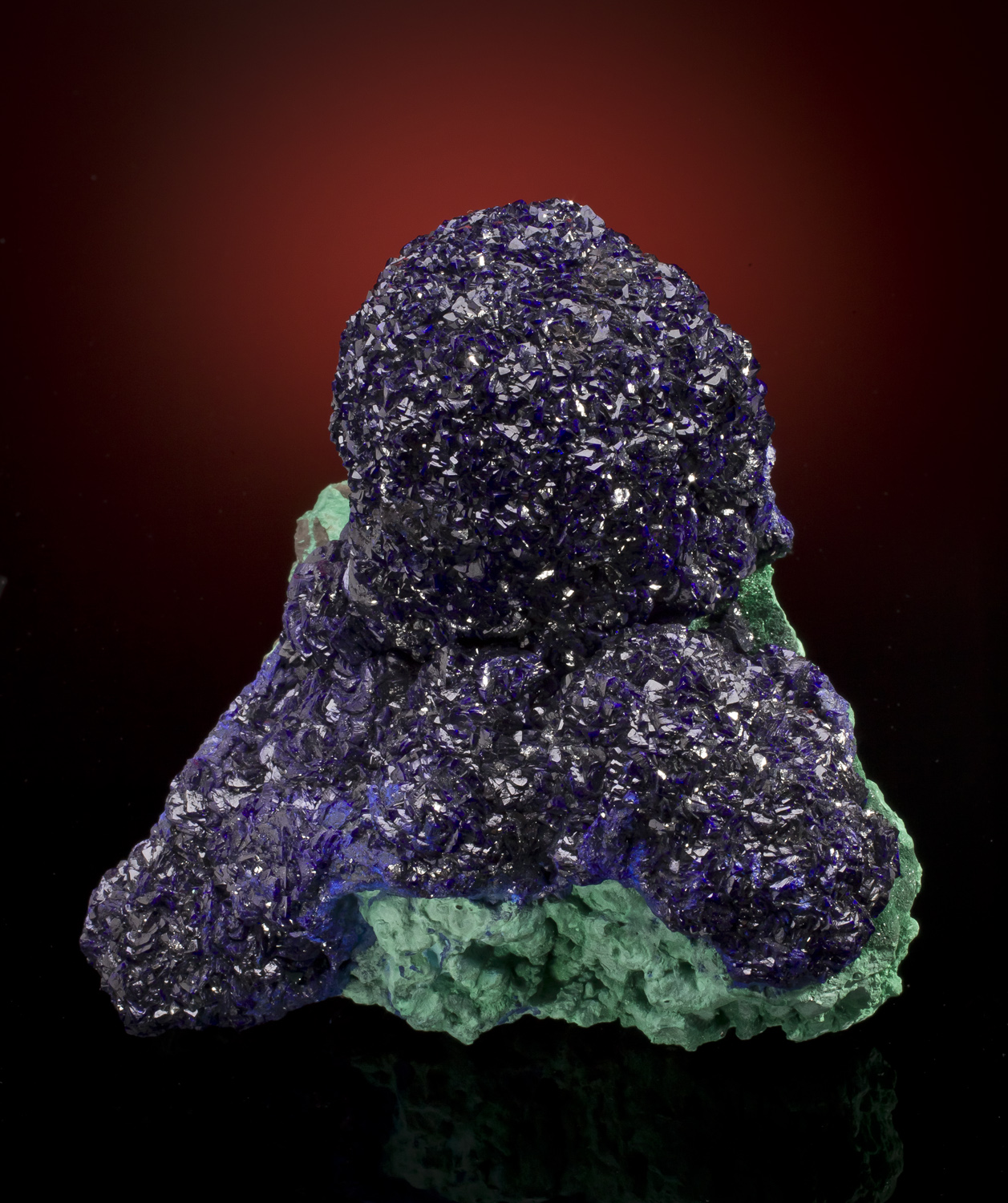
I will share one of Fran’s favorite stories, that few people could be told at the time. In 2005 or so, a tip from a fellow judge on the Appellate Court led Fran and I to sneak underground at the Bunker Hill Mine (seems safe to tell it now!) while it was the subject of a closure order from the EPA and as it was served by government attorneys. So, Fran served on the DC Appellate Court of Appeals, the final place that cases against or prosecuted by the US Government go, after appealed from a lower District Court, and before they reach the Supreme Court if a decision could not be made by Fran’s colleagues. Fran’s mineral collection was in his office, and all the judges had seen it (we tried and failed to get them to invest in minerals with him!). They knew about minerals, in any case. One day, another judge sitting at lunch next to him said to him that he had just gotten back from a case involving trying to close a Superfund toxic waste site, and had the most surprising experience of being walked through a room at the mine owner’s building that was “a rainbow of color with rocks just like you have in your office on all the walls.” Fran says he kept a poker face, excused himself to call me, then went back and got what info he could. We knew the case was being litigated in Idaho, and there are only so many Superfund waste sites in Idaho and even fewer that the government was actively fighting with the mine owner to close down. I quickly found out that the room this judge must have seen would have to be the stash of Robert “Bob” Hopper, a far-right talk show host in rural Idaho that made Rush Limbaugh look fairly liberal at the time. He had bought the Bunker Hill lead mine out of bankruptcy in the early 1980s and was responsible for allowing the collecting in old tunnels dating to the 1800s that turned up the incredible finds of Pyromorphite that came out in two waves from this old mine, in the mid-1980s and in 1995-1997. Hopper was mining the dumps of already mined material for zinc and other metals, and not bothering to mine the actual lead deposit. Too much work!
Wayne Sorenson (a well-placed mineral collector who owned the analytical lab down the road in Idaho) and Wayne Thompson (dealer and his friend) handled the sale of the pyromorphite at the time. I called Wayne Thompson to ask for an introduction to Bob, whom I had never met, and told him about the exciting news Fran had heard from a judge, about this secret stash! Wayne promptly said something to the effect of “oh yeah, I always meant to go back for that stuff and keep forgetting. I got all the good stuff and Bob is so difficult, that we never bothered.” Upon further clarification, what Wayne meant was that he bought all the things he thought were worth more than $10,000 by standards of 1997…. and then forgot about it for a decade. Well, needless to say, MANY pieces were worth more than that by 2005, and also Wayne had not even thought about trimming the big ones down to size and cleaning them. Fran and I decided that we might have a different take on what was worth getting, and so I called Bob with Wayne’s info to set up a visit. Luckily, Wayne is a gun-carrying cowboy and they had a good relationship, so I got in the door with that introduction – barely. The more Bob Hopper found out about me, the less he liked me (I had gone to school in California, and was too young to be serious in his mind). I certainly did not mention that my “friend” I would bring with me was another judge on the same court that was trying the governments efforts to shut Hopper down. And a Democrat, no less! Fran and I arranged to meet in Spokane (where we had dinner with Dave Waisman and Fran contributed to the founding ideas of his Texas Fine Mineral Show); and things were all set to drive out to the mine in Coeur d’Alene, Idaho, the next morning at 9 AM. While we were at dinner with Waisman, I got a call from Hopper something to the effect of: “the damned EPA **&*&-censored**&$ lawyers are coming tomorrow. I hate those &$&^$ ratbag scum lawyers. Come at 6 AM so we can go underground and avoid them.” Fran and I got up at 3 AM and drove out to meet Bob at the mine as ordered. He also told us to not bring any cameras and not tell any “damn lawyers.”
As I drove up to the mine, with us debating how to introduce him other than as a federal attorney and judge, Fran cringed a little at the signs which stated such homilies as “Just say no to the EPA!” and “This is my mine and my shotgun proves it,” that had been posted near the entry. Bob met us in his office and hurried us into gear – knee-high boots to keep out the toxic lead and arsenic-filled red water that was flooding out of the mine, and hard hats. We went underground through a locked metal mine door and onto a small ore-mover with a mini-locomotive at the front. Fran and I sat in the car in silence while he drove, and chain-smoked, about 1 mile in the dark into the mountain. While driving, Hopper lectured us on how to be quiet and not talk to his employees, how to enjoy the silence, and not to talk to any “damn lawyers” once we got out, because he was fighting the government to keep his mine open in the hopes that someday the largest easy lode of lead in the USA would make him rich beyond dreams – if he could legally mine it. We actually got to the old areas from the original lead and silver mining in the late 1800s (we saw signs to 1890) and used an old man-mover on a generator to go up a few levels, maybe 100 feet up into the mountain from grade level. He had a man there, who we were not allowed to talk to. Fran tried to make small talk but got chewed out for talking to the employee and told that “respect is the highest honor,” and to respect his wish to stop talking. We stopped talking. Did I mention he was carrying a firearm?
That worker then climbed up the way we had ridden, and we all sat and watched them amiably chain-smoke while they pumped what I was told was pure oxygen from a tank up a 100-foot hole into the one part of the mine where the pyromorphites had been found (the Jersey Vein). The air was bad up there, and nobody had been up in a long time, so they had to pump some air up. The ladder was about 200 steps nearly straight up through a 4-foot vertical tunnel, from our level to the Jersey Vein. It was at that point that Fran looked at me and calmly announced he was quite comfortable to stay down and “not talk” to the worker but would take a photo of my climbing up to my death. Bob had me lead, and I went up the ladder. Waiting for him, I sat and contemplated Fran’s choice of words. Bob came up and had a 5 minute smoking break in the pure oxygen, to recover from the climb. I worried it would explode us. Then, we took a walk and saw empty pockets all along the vein for maybe 100 meters, culminating in a huge and unreachable ceiling covered with bright orange arsenian pyromorphite that looked like a sunset in our headlight beams. The pockets were cleaned out and rimmed with cigarette butts encrusted in lime and mine goo, so that the butts made a rim around the bottom of each pocket. While we were up there, Fran “not talked” to the worker anyhow, and got a good picture of the goings on at the mine and the number of specimens that had been stashed. On our exit from the mine at noon, Bob was surprised to find the federal attorneys waiting for him, as he thought they would have gone away since he missed their 9 AM meeting. Sure enough, two huge black Escalades were waiting, with Salt Lake City plates. Those lawyers were not going away. So, Bob lined Fran and I up, and took turns rubbing his hands against our legs and chests to get all the gooey, red, lead-stained mud off of our clothes and put it on his overalls, unbuttoned his shirt to let the sweaty smell out, and smeared some mud on his chest for good measure. He then told us to wait in the collection room while he met the attorneys for “a short while,” and directed us to the treasure room we had been waiting for!
Through the window, we watched him slime his hands on his boots for good measure, and then walk up to them and greet them with a firm muddy handshake. As we turned around, sort of in shock after spending 5 hours underground with this chain-smoking guy and being out of breath and having no water or food, we saw a massive mutt of a dog looking up calmly at us from his bed n the floor on the far side of the approximately 12 x 15-foot room, lined with mineral cases and filled with all colors of pyromorphite. The dog was a guard dog. It was not happy to see us in its space. Fran went to the water cooler, across the room, and it leaped up and growled. What became clear was that we could not cross a line about 5 feet into the room, without the dog making scary faces and noises at us. So, we looked at the closer minerals, leaned over to see others as we could, and waited. Two hours. Finally, Bob was done with his meeting and he came to get us, excused the dog, and we could see the whole room freely. Long story short, we bought some rocks that day, including at least two dozen pieces worth 10k and over, hundreds worth $500-5000 that Wayne had simply not wanted to handle nearly 10 years prior, and the biggest single specimen Bob had ever recovered intact – a monster yellow piece with no repairs from the mid-1980s that was near 2 feet across! Fran’s commission on the tipoff was a number of smaller pieces he traded off and a magnificent, 3-dimensional orange pyromorphite cabinet piece from the mid-1990s finds, that remains in the collection. Bob was in such a good mood after insulting the lawyers for two hours and preparing for his afternoon radio show to talk about it to his listeners that we got a splendid deal and were able to buy much of what I wanted, though it was far too much to take all at once (the rest was later wholesaled out before Bob passed away). Fran and I went home dirty but happy, having to drive all the way back to Spokane to get a hotel and a shower after our long day. I think we were both so tired that we got on the plane the next morning in relief, and he took his prize home with him.
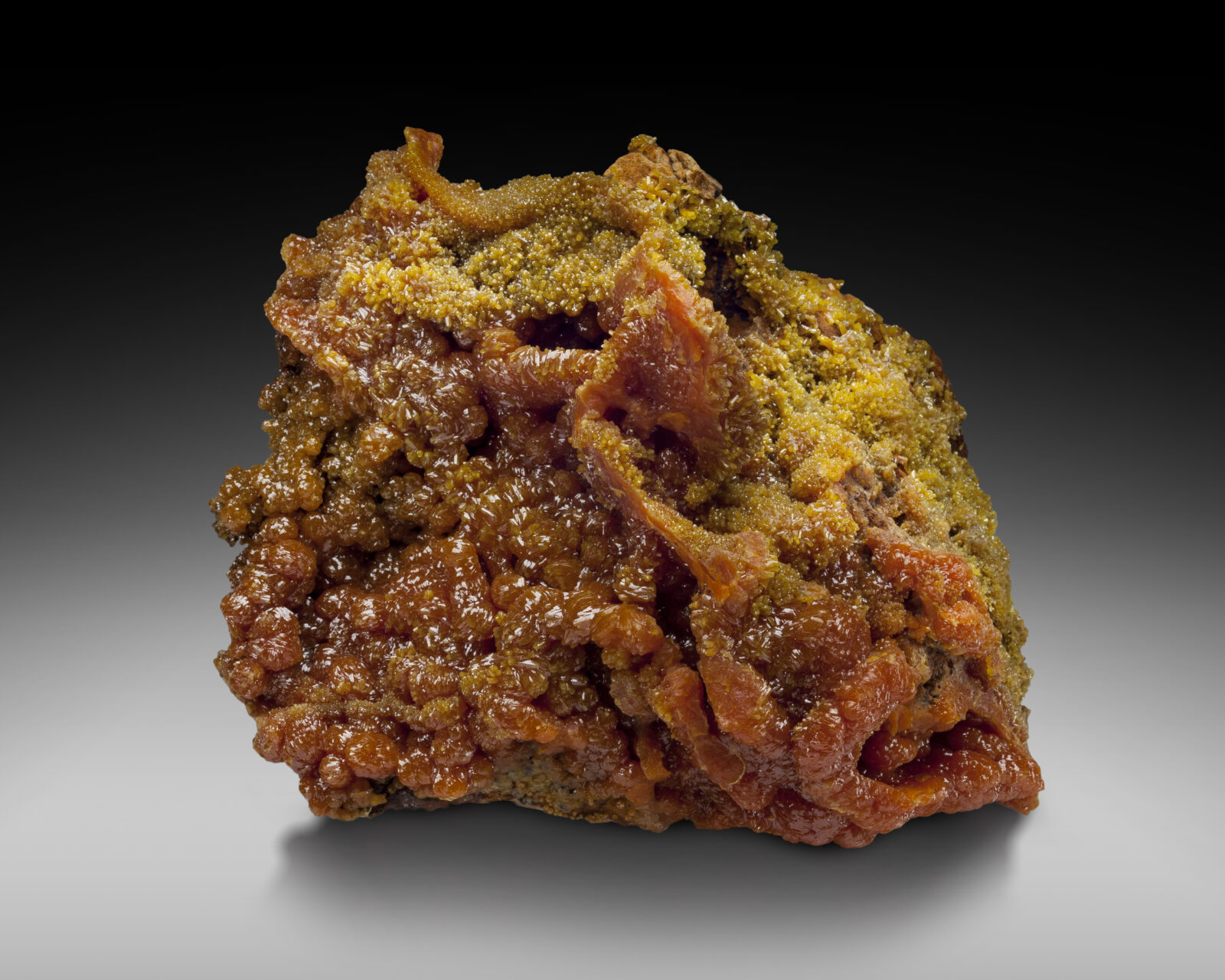
EPILOGUE
Fran was a strong supporter of this symposium, and he attended 3 of the years during 2011-2014. For 2015, he planned to bring his son Domenic for the first time and also was scheduled as a speaker on a sequel to his 2011 talk on how collectors and museums could work more together through philanthropic donation. Just before his cancer came back, we had scheduled him as a speaker. He was actively considering how to retire from being a judge at age 65 if he did not go on to the Supreme Court under a Democratic president. He taught law at George Washington school of Law for mineral money on the side, and he was thinking to continue to do that while starting a niche business in law advisory related to mineral donations, customs, and estate tax law. As well, Fran talked about being more active with the Mineralogical Record and was starting to write regular columns with Wendell Wilson under the title “Legal Nuggets,” which are all still as relevant now as ever.
A recent note from his son Domenic, now heading to college, shows what an impact he made in involving his oldest son, in particular, in his hobby. “I always wanted to go to the symposium with my father, but he passed away the last day of the 2015 symposium. Thankfully I was able to go to the 2015 Tucson show with him, something that I always dreamed of doing since my youth. I consistently watch my father’s talk on the DVD from the 2011 symposium; it is always great to hear his voice and his “ dad” jokes. After he passed, staying connected with the mineral world has been difficult. I haven’t had the opportunity to attend any shows, but that hasn’t stopped me from keeping in touch with all of his friends. As I head to college in the fall, even though I will not be majoring in geology, I will be studying political science and will hopefully be attending law school to follow in his footsteps.”
I would be remiss without mentioning here that Fran’s other most important activity besides his love of the law and legal matters, and his mineral collecting, was to spend time with his family and kids. He became a gung ho Cub Scout leader, going all out for Denmaster Dad at a time when I was struggling with the responsibility of being only an assistant den leader. Despite his incredibly busy schedule, he pursued the most active involvement possible for a father, and attended nearly all pack meetings and many camp outs. He was an avid counselor for kids as they advanced through Scouts, and toured them to the Courthouse and the Supreme Court on a regular basis. He stayed with his boys through Boy Scouts, and spent hundreds if not thousands of hours supporting their Troop and many other Scouting events on a regional level in Washington DC. Fran was a dedicated Scout father, often changing into Scout gear at the courthouse and going straight to meetings, and then finishing his work late into the nights and early in mornings.
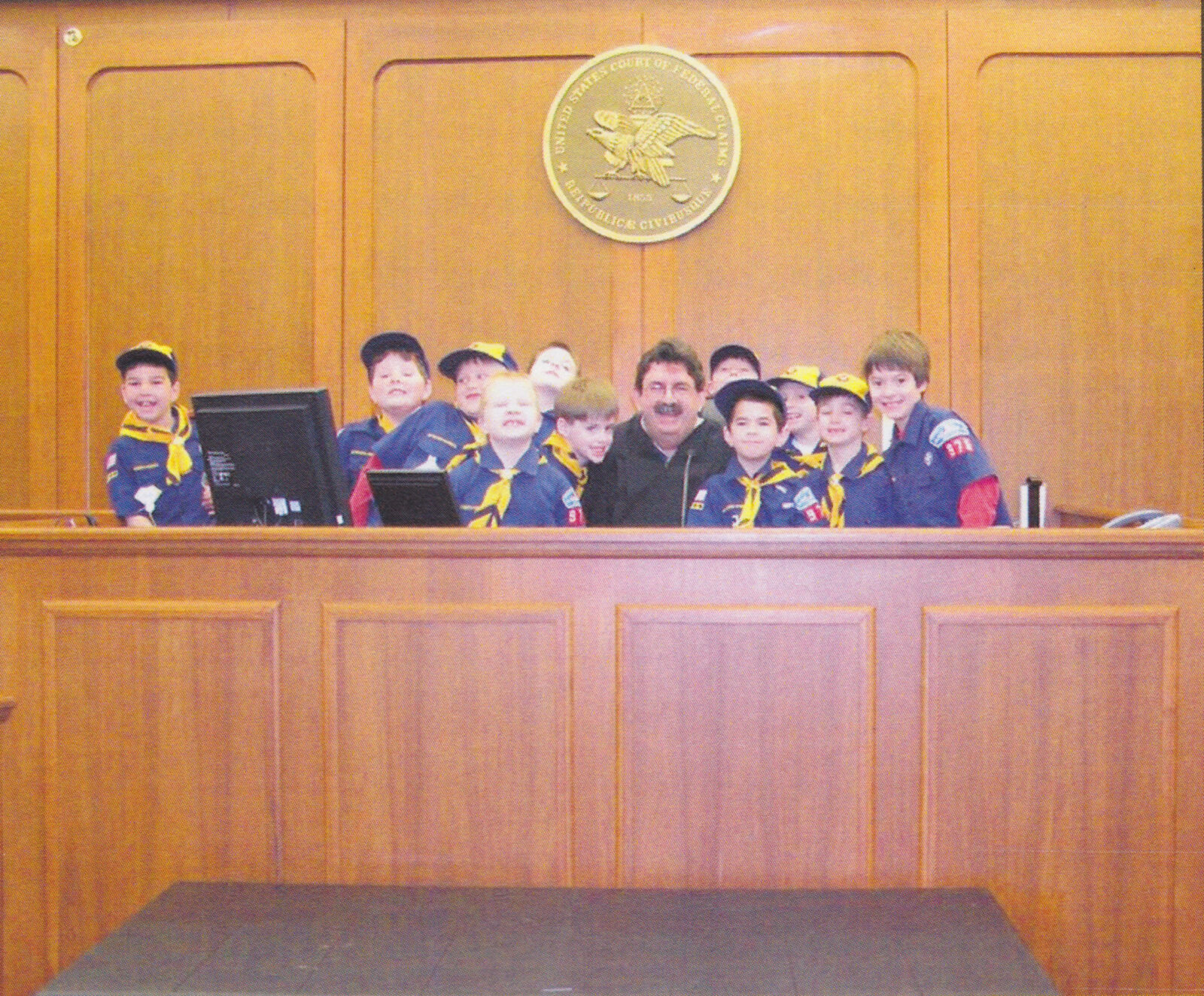
-Dr, Robert Lavinsky
August, 2017